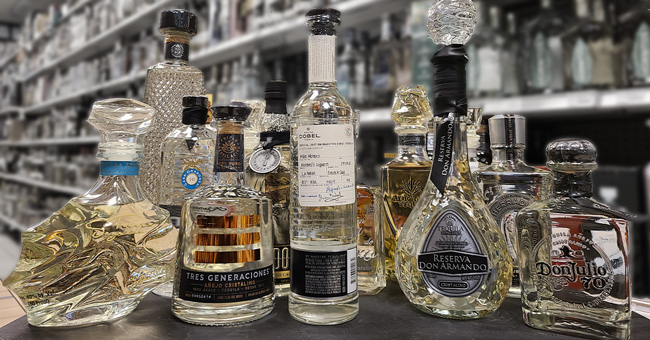You’ve heard of tequila blanco, reposado, and añejo, but what about cristalino? Last week Jose Cuervo announced the U.S. launch of the tequila giant’s first cristalino tequila, begging the question, what exactly is a cristalino and why is this subcategory an emerging buzzword?
A cristalino tequila is an aged tequila that has been filtered to remove the colors of the aging process. Similar to some white rums that are barrel-aged and filtered, the result is a nearly crystal clear spirit, thus earning the name cristalino which translates to crystalline. While filtering is typically done with charcoal, the process is often referred to as a signature or proprietary refinement process.
Falling outside of the official regulatory buckets of the Tequila Regulatory Council (CRT), distillers enjoy more freedoms with aging and blending cristalinos than when producing other tequila classes. Añejo tequila, for example, has a minimum barrel-age time of a year, as well as other other blending rules. Cristalino distillers release bottles and blend tequilas of varying maturities.
Cristalinos are a growing sweet spot for customers looking to sip or shoot something with some of the flavors of an aged tequila but without the price tag of a premium añejo or reposado, according to Mike Moreno Jr., owner of Moreno’s Liquors in Chicago . Cristalinos can retain some of the nuanced creamy or vanilla notes of añejos, while feeling lighter than other aged spirits, he said.
“It’s probably one of the fastest growing categories for tequila right now,” he said. “Every year there are more cristalinos coming out and they do very well.”
In 2017 Moreno teamed up with Maestro Dobel to hand-blend a speciality Moreno’s Liquors cristalino edition that’s a highland tequila blending reposado, añejo and extra añejo priced at $29. But other bottles range much higher, giving cristalino the aura of a luxury product: Tuyo Tequila cristalinos come with Swarovski crystal necklaces, for example.
Moreno’s number one seller is Don Julio 70 Añejo Claro Tequila, which debuted in 2011 and claims to be the first añejo cristalino on the market, although Maestro Dobel’s Diamante debuted prior to that in 2008 with a reposado in its blend.
But for some aficionados, the growth of the trend is an unfortunate byproduct of the rising tequila category, which in 2020 surpassed rum and bourbon by volume, according to IWSR Drinks Market Analysis.
“I just don’t understand why you would take the time to age a product and then filter it,” said Khrys Maxwell, the Director and Curator of Tequila and Agave Spirits at the Museum of Distilled Spirits. Maxwell previously worked at Fortaleza Tequila for ten years.
Additionally, there are concerns that the clear product has some hidden ingredients: while products falling under the best known clear tequila classification, blancos, aren’t permitted to use additives like caramel color and sugar extract, aged tequilas are. Maxwell suspects that cristalinos are a convenient workaround to lure customers who perceive clear tequilas as a healthier, more natural spirit – even though they might have the additives present in the aged products. There’s no requirement to label tequila with additives as long as they don’t exceed 1% of total volume. While that’s a small amount, tequila activists have raised concerns in recent years about the increasing potency of additives and lack of transparency in the industry.
“I hope that I’m not wrong in that it’s going to be a fad, rather than something that is going to strip away even more of the flavors of tequila,” Maxwell said.
If it is a fad it’s not slowing down yet. Tequila database Tequila Matchmaker lists 78 cristalinos on their site, and just this year Cuervo’s launch follows the release of Tequila Avion’s Reserva Cristalino and Tres Generaciones’ Añejo Cristalino.

